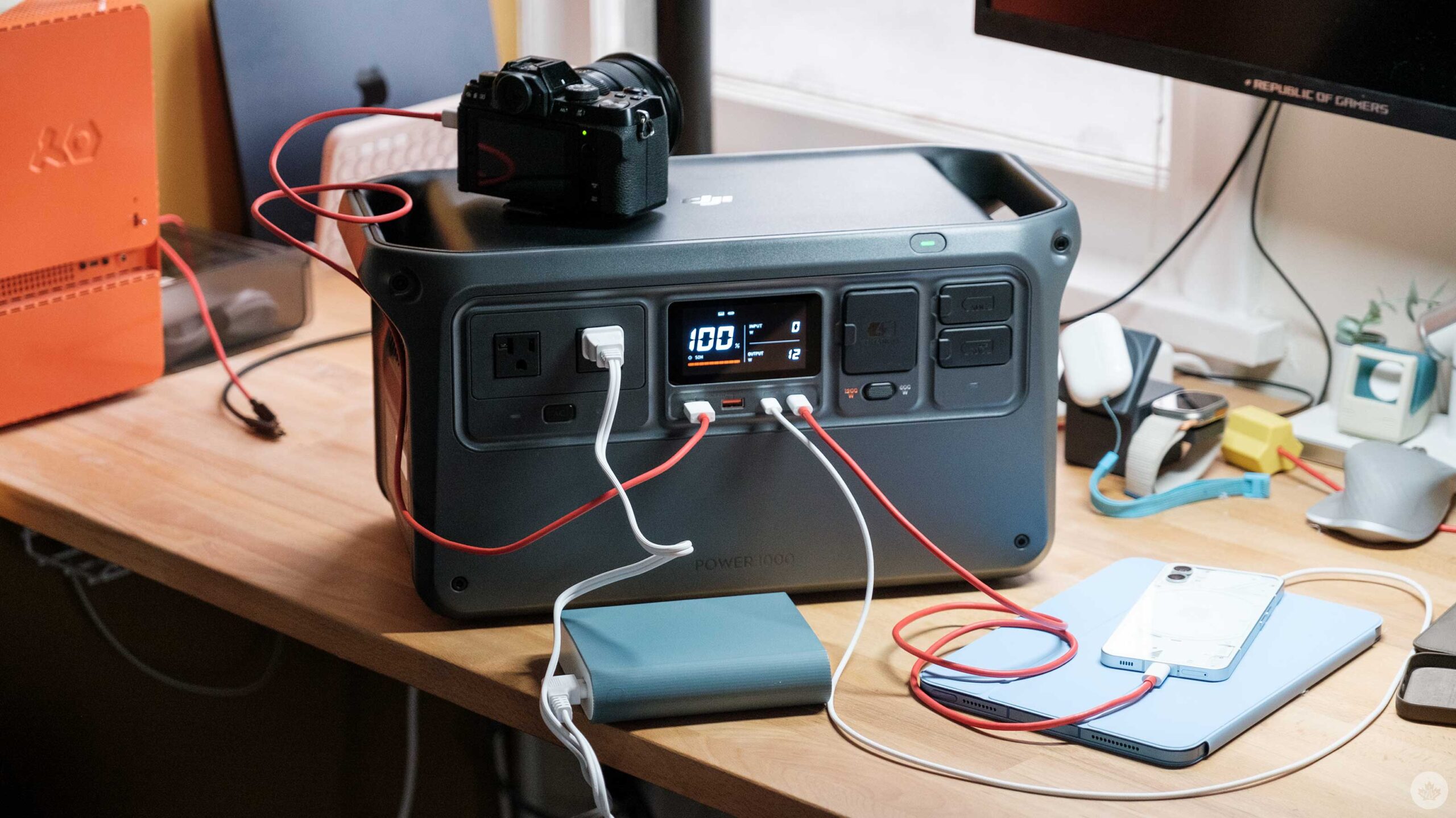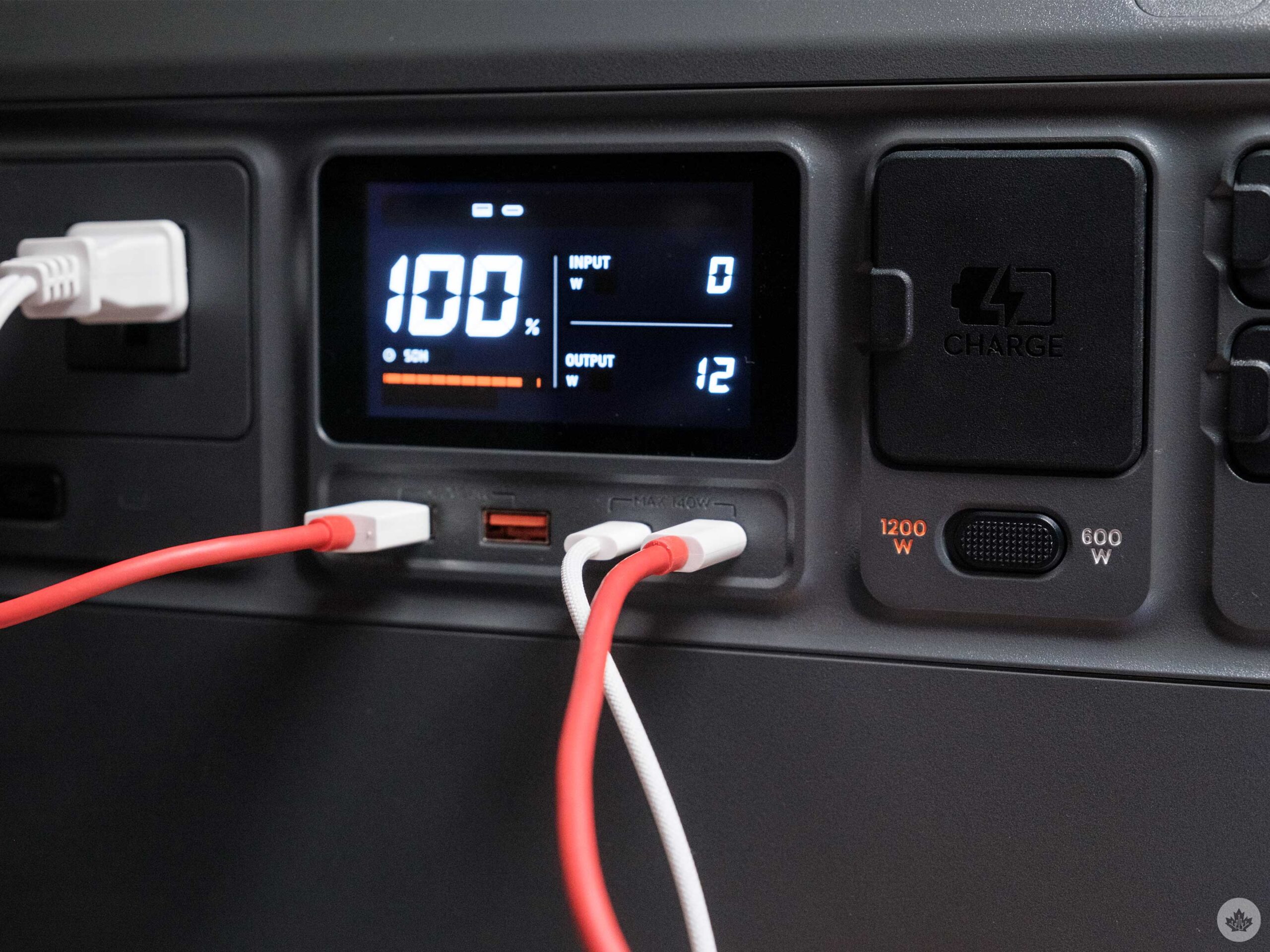
In a surprising move, DJI has launched two huge portable batteries, the DJI Power 1000 and Power 500. However, only the Power 1000 is available in Canada.
The Power 1,000 stores 1,024 watt-hours and weighs slightly over 12kg (about 28lbs). It’s about the size of a medium cooler, and as heavy as one filled with drinks and ice. That said, for some situations, the power it offers is worth the weight trade-off. DJI says the charger can power a typical phone 57 times and a Wi-Fi router for a little over 76 hours. In my brief tests, I’ve yet to drain it with casual charging for a couple of days, but I’ll need to spend a little more time with the Power 1,000 to fully test its limits.
The unit features two 120-volt wall outlets, two USB-C ports and two USB-A slots. All of these can be used for charging. DJI says the 120-volt outlets should support 99 percent of appliances and power tools. I’ve been able to run my large studio lights and an electric sander off the Power 1000 with no problems. You can also use the USB-C ports for fast charging since both support Power Delivery (PD) 3.1, which should supply up to 140 watts. One of the coolest things about the Power 1000 is how fast it charges. Plugged into a wall outlet, it can fill itself up in 70 minutes. It’s not an entirely fair comparison, but I have older rechargeable AA batteries that take about five hours to charge, so how quickly this giant battery tops up blew me away. When it’s charging, the fans also kick on, and while you can hear them, they’re pretty quiet and not worth complaining about, especially since it doesn’t need to charge for very long.
One of the coolest things about the Power 1000 is how fast it charges. Plugged into a wall outlet, it can fill itself up in 70 minutes. It’s not an entirely fair comparison, but I have older rechargeable AA batteries that take about five hours to charge, so how quickly this giant battery tops up blew me away. When it’s charging, the fans also kick on, and while you can hear them, they’re pretty quiet and not worth complaining about, especially since it doesn’t need to charge for very long.
You can also charge it with a car’s 12/24-volt plug or solar panels if you’re not home. That said, you need to buy these separately. They’ll both also take more time to charge your battery. DJI says that a three-panel array from a company called Zignes will top up the battery in anywhere between 1.5 and 2.8 hours, depending on the sun. I was able to test this with a single solar panel from the company, but it worked well, and the display on the battery does a good job of showcasing how much power it’s taking in. That said, it takes a long time to charge with one panel. However, if you’re camping and not using power, you could leave it out all day and likely make back enough power to offset the charging you might have to do that evening.
One DJI-specific feature is the ability to fast-charge the company’s drones. You need to buy specific cables that go from the Power 1000’s SDC ports to the drone’s battery, but the company offers many options depending on your drone model. These are around $30 CAD. If you spend a lot of time flying drones remotely, this is super handy, but for most, I’m not sure its price and size are worth it, considering how much cheaper and smaller spare drone batteries are.
Overall, DJI says the battery has an expected lifetime of ten years, but the cell capacity will drop a little over that time. The Power 1000 costs $855 USD (roughly $1,177 CAD).
MobileSyrup may earn a commission from purchases made via our links, which helps fund the journalism we provide free on our website. These links do not influence our editorial content. Support us here.


